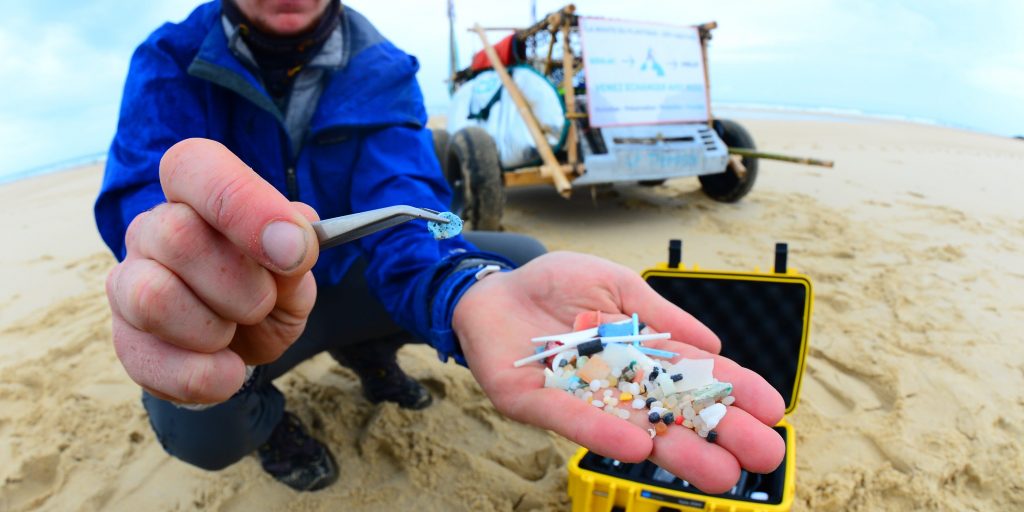- You've probably consumed microplastics without realizing it, according to recent human studies.
- The tiny particles shed from plastic waste can end up in the air, oceans, and human bodies.
- Scientists don't yet fully understand how microplastics impact humans, but they're trying to find out.
Scientists are certain that humans around the world are ingesting tiny pieces of plastic on a regular basis. Now, they are seeking to understand how the wide distribution of microplastics affects human health and the environment as a whole.
Eating a credit card's worth of plastic — a comparison often used to illustrate estimates that people consume about 5 grams of microplastics a week on average — sounds unhealthy on a very visceral level. Learning that those pieces of plastic could later show up in your lungs is even scarier.
Investigations into microplastics exposure and human health have confirmed that not all plastic ingested by humans comes out the other end; at least in some cases, microplastics can be absorbed into the bloodstream or trapped in the lungs.
But scientists don't yet know how the presence of microplastics in the body affects overall health, especially compared to exposures to other environmental chemicals and contaminants.
Microplastics are everywhere from the oceans to the air
You may have heard that plastics never fully decompose. In fact, plastic waste slowly breaks down into smaller and smaller pieces, creating microplastics that are so light they can be swept up by the wind.
Microplastics are defined as particles measuring no more than 5 millimeters across, which is about the size of a grain of rice. In the 20-odd years since they were named, scientists have found microplastics in virtually every environment, from ocean floors to mountain peaks, National Geographic reported.
Studies aimed at locating microplastics and confirming human exposure have been ongoing for a decade or more, marine scientist Alice Horton told the magazine. The current phase of research should focus on potential impacts to human and environmental health, in line with a call to action by the World Health Organization in 2019.
"We can stop looking now," said Horton, who studies microplastic pollution at the UK's National Oceanography Center. "We know wherever we look, we will find them."
However, just because a chemical is considered toxic does not mean scientists are sure how much of that substance would cause significant harm to a wide population.
Plastic particles have been found in human lungs, blood, and breast milk
Recent studies have confirmed the presence of microplastics in human lung tissue taken 11 from living patients, as well as in the blood of a separate group of 17 out of 22 people tested.
Before that, scientists suspected that some microplastics remain in the body (although many particles exit via bowel movement). An earlier study that identified plastic particles in the placentas of unborn babies raised concern about harm to developing fetuses.
We know that plastics are made of chemicals, and many of those chemicals have the potential to be toxic to humans. Of more than 10,000 ingredients used to make plastics, public health experts are concerned about more than 2,400 unique chemicals — and 901 chemicals on that list have been banned in some countries, according to an analysis by researchers in Switzerland.
We don't yet know the impact of exposure at those levels
The studies that found microplastics in human lungs and blood did not consider how their presence in the body might impact health, in part because those were the first investigations to confirm that presence at all.
Information like types of plastics, size of particles, how many, and where they are in our bodies may help scientists begin to study the potential health risks associated with ingesting or inhaling microplastics, environmental pollution experts told Popular Science. Next steps could include trials to study whether the plastic particles can block blood vessels or interfere with organ function.
But one ongoing challenge of environmental health research is the "sheer number of chemicals we're exposed to in our daily lives," Australian research scientist Denise Hardesty told National Geographic. Parsing out which health problems are caused by microplastics compared to PFAS or other toxic chemicals would be a massive undertaking that may not be possible in our lifetime, if ever.

